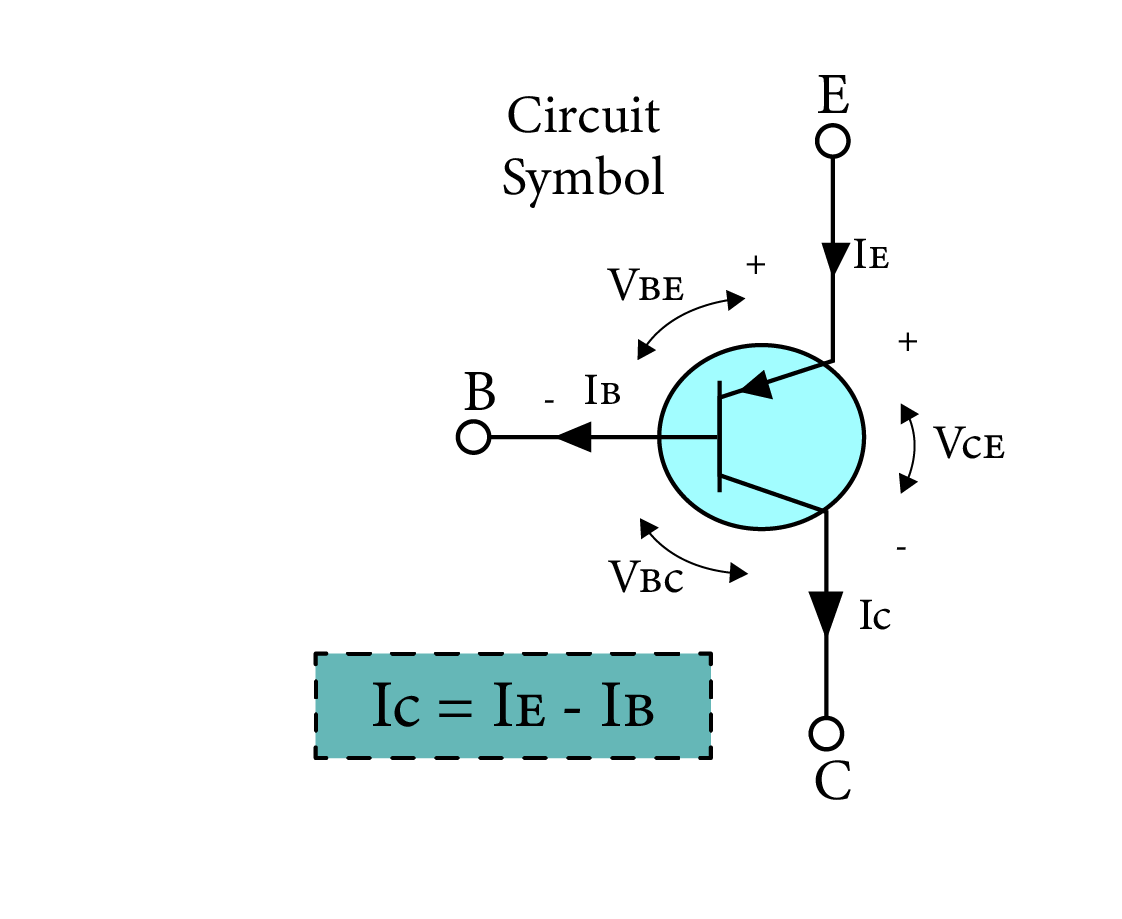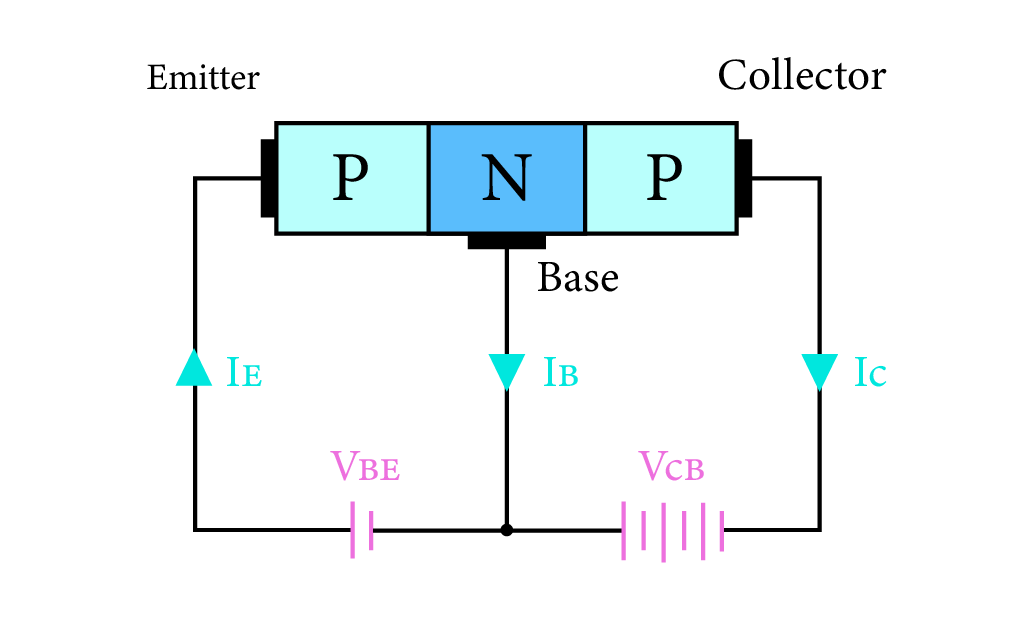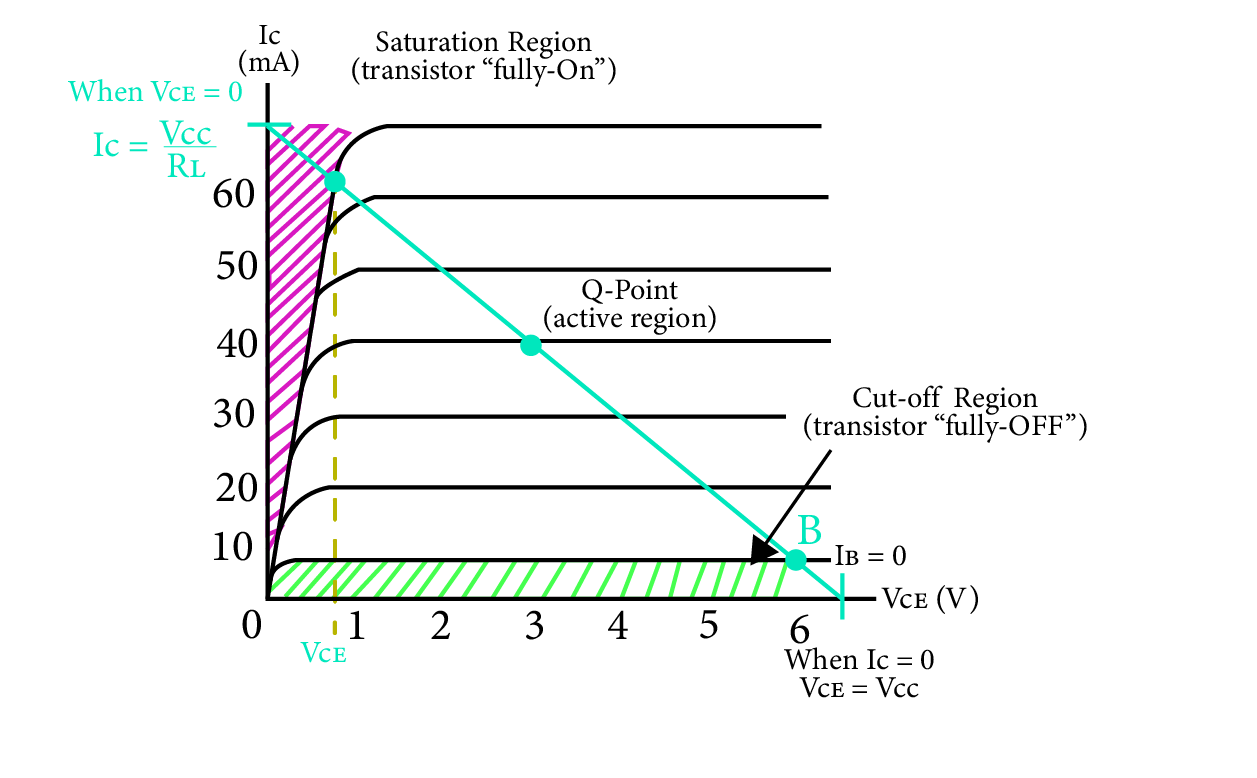The Bipolar PNP Transistor
The Bipolar Junction Transistor has mainly two types that are NPN and PNP transistors. In a PNP transistor, one N-type semiconductor material is present between the two P-type semiconductor materials. NPN transistor is opposite to it.
Configuration of PNP Transistor
The three terminals of PNP transistor concerning semiconductor materials are:
- Emitter (P-type material – Heavily Doped)
- Base (N-type material – Lightly Doped)
- Collector (P-type material – Moderately Doped)
The base of the PNP transistor is lightly doped to allow the least recombination in the base region. In the PNP transistor, the forward biased is the emitter-base. It has very minute resistance. However, the Collector-base junction is reverse-biased. It has large high resistance. Furthermore, in a PNP transistor, current sinks in the base.
How Does a PNP Transistor Look Like?
PNP Transistor looks as shown below:
How Does PNP Transistor Work?
When base-emitter voltage (VBE) is applied on the emitter-base junction, the emitter releases holes towards the base, and the emitter current (IE) starts to flow. Some of the holes combine with electrons in the base and produce a small base current (IB) that flows back to (VBE).
However, the remaining holes carry current towards the collector and go towards the negative terminal of (VCB) constituting (IC).
Base current flows when the base is 0.3V more negative than the emitter for a Germanium-based semiconductor device and 0.7V more negative for a Silicon-based semiconductor device.
Formulas used to calculate currents in the base and collector are as follows:
where ß is the current gain, which describes how much of the base current is amplified to the collector current.
Operating Modes of Transistor
A transistor works in three modes:
All three modes are explained below:
1. Active Mode of Operation
In this mode, the emitter-base junction allows current in the forward direction, and the base-collector junction does not allow current to flow as it is reverse-biased. A large number of holes transfer current starting from the emitter and ending towards the base. This causes an increase in base current, and the transistor is acting in active mode. The Q-point in the graph shows the steady operation of the transistor.
2. Cutoff Mode (Open Circuit)
In cut-off mode, there is no collector current as both junctions are reverse-biased. It behaves as an open circuit in this cutoff mode. In cut-off mode, the base voltage is less than the emitter as well as collector voltage.
3: Saturation Mode of Operation (Short Circuit)
In saturation mode, forward-biased junctions are emitter-base and collector-base. This setting allows the transistor to become a short circuit. Large current flows through the transistor in this mode. In this case, the base voltage is higher than the emitter as well as the collector voltage.
Functions of PNP Transistor
This transistor can perform switching in a circuit. It can also be used for amplification to increase voltage or current signal.
1. Transistor as Switch
To use the transistor as a switch, the emitter-base junction is reverse biased, with the base at a more negative potential concerning the emitter and when base current flows, it behaves as a short circuit which means that the circuit is closed. Otherwise, it behaves as an open circuit.
2. Transistor as an Amplifier
For utilizing the transistor as an amplifier, the base is lightly doped. It is because the base is the actual controller of the current. With less number of electrons, it combines the least number of holes and passes on most of the holes to the collector, thereby giving a large collector current.
Conclusion
The PNP transistor is a semiconductor device in which two P-type materials enclose an N-type material. This device has diverse applications in the field of electronics. It has three different modes of operation that permit the transistor to be used as a switch or an amplifier. It acts as a switch in cut-off mode (open circuit) and saturation mode (short circuit).








